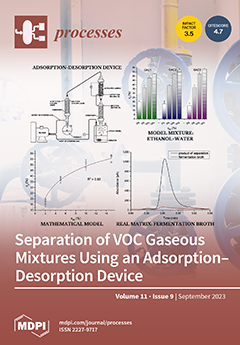The diffusion coefficient (
D) is a key parameter that characterizes the gas transport occurring in coal seams. Typically,
D is calculated using the desorption curve of particle coal. However, this method cannot accurately reflect the diffusion characteristics under the stress constraint
[...] Read more.
The diffusion coefficient (
D) is a key parameter that characterizes the gas transport occurring in coal seams. Typically,
D is calculated using the desorption curve of particle coal. However, this method cannot accurately reflect the diffusion characteristics under the stress constraint conditions of in situ coal seams. In this study, different metamorphic deformed coals of medium and high coal rank were considered based on Fick’s law of counter diffusion. The change laws of
D under different confining pressures, gas pressures, and temperature conditions were tested and analyzed, and the influencing mechanisms on
D are discussed. The results showed that
D of different metamorphic deformed coals exponentially decreased with an increase in confining pressures, and exponentially increased with increases in gas pressures and temperature. There is a limit diffusion coefficient. The influence of the confining pressure on
D can essentially be determined by changes in the effective stress, and
D negatively affects the effective stress, similar to permeability. The effect of gas pressure on
D involves two mechanisms: mechanical and adsorption effects, which are jointly restricted by the effective stress and the shrinkage and expansion deformation of coal particles. Temperature mainly affects
D by changing the root-mean-square speed and average free path of the gas molecules. Under the same temperature and pressure conditions,
D first increased and then decreased with an increase in the degree of deformation.
D of the fragmented coal was the largest. Under similar deformation conditions,
D of the high-rank anthracite was larger than that of the medium-rank fat coal. Porosity is a key factor affecting the change in
D in different metamorphic deformed coals.
Full article





